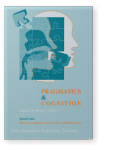Between placeholder and filler
Degrees of prosodic prominence of French machin and truc
French truc and machin (‘thing’) can function as placeholders, fillers or in
general extender constructions. The aim of our paper is to investigate whether the prosodic characteristics of these three
different uses may give a clue as to their respective status. For our analysis, we extracted 112 occurrences of
truc and 57 occurrences of machin from the audio data of the PFC Corpus, which were analysed
using Praat, focusing on the acoustic duration, the individual pitch contour and the integration of machin and
truc into the intonation contour of the utterance. As in previous studies, our results show that the prosodic
patterns vary remarkably and show a highly heterogeneous picture so that the use of prosodic properties as cues for disambiguation
is problematic. However, we are able to show some weak tendencies which point to a close functional link between placeholders and
fillers reflecting their pragmatic functions. There is no evidence for prosodic weakening or even phonetic reduction in
placeholders. Furthermore, we detect some evidence for the detachment typical of pragmatic markers in the case of fillers. The
prosodic characteristics of truc and machin in general extender constructions diverge from both
the placeholder and the filler functions. Their prosody seems to be largely determined by the particular respective construction into which
both forms are strongly integrated.
Article outline
- 1.Introduction
- 2.Fillers and placeholders: An overview
- 3.French truc and machin
- 4.The prosodic properties of truc and machin
- 4.1Method
- 4.2The prosodic analysis of truc
- 4.3The prosodic analysis of machin
- 5.Discussion
- Acoustic durations
- Intonation contours
- Prosodic integration/detachment
- 6.Conclusion
- Notes
-
References
